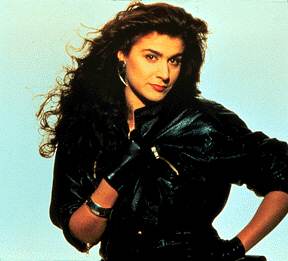
There is little doubting Cecilia Bartoliís status as the mezzo of our time. It was with Nikolaus Harnoncourt that she stepped on stage for the first time in a Mozart role (as Cherubino in Zurich in 1988). Characteristically, her choices for this concert were fascinating: here was a major international artist in repertoire rarely heard live. Two of the arias, K583 and K217, were actually written for insertion into other composerís operas (Vado, ma dove?, K583 for Antonio Solerís Il barbero di buon cuore; Voi avete un cor fedele, K217 for Galuppiís Le nozze di Dorinda), only K528 standing in its own right.Vado, ma dove? began with Bartoliís superb declamation. She turns a phrase perfectly, with a complete mastery over the dramatic situation (one gets the impression that a recitative could never be a fast-forward experience with this artist). Her characterisation was gripping: there was no period in which Bartoli had to draw the audience in Ė the effect of entering the mind of the protagonist was immediate. Her ability to float a line over Harnoncourtís super-sensitive accompaniments was pure magic.
It would appear Bartoli wanted the three arias to run together, as she looked slightly embarrassed by the applause following the first of her trio. The aria K528 (Bella mia fiamma, addio!) saw Bartoli using a slight edge to her voice to expressive effect. She was as expressive in her gestures as in her voice (an unusual combination as frequently too much movement means the singer is compensating for defects in technique).
One could actually see Bartoli warm to the London audience by her third aria. Voi avete un cor fedele gave more of an opportunity for fireworks, and it was an opportunity that Bartoli relished to the full. The ovation she received was more than warranted.
Mozartís Symphony No. 29, which preceded this trio of delights, was given a typical Harnoncourt performance: accents positively bit the listener within predominantly fast tempi. There was real drama here: the first movement almost came across as an opera overture! Harnoncourt ensured that bold colours were brought to the fore, horns blazing appropriately at the conclusion. This was far more than a warm-up for Bartoli because of Harnoncourtís enviable ability to make one rethink this repertoire.
Schumannís orchestration is frequently called in to question by commentators, but any such doubts were swept aside by this performance of the ĎSpringí Symphony. Certainly, the antiphonal layout of the violins helped to elucidate textures and counterpoint, but there was so much more to it than that. Right from the very first phrase, when the little comma of fresh air between the first two notes heralded a lighter reading than most, there was an aura of authority about the interpretation. Several times, Mendelssohn was brought to mind, particularly in the lightness of the string articulation during the finale. The stabbing accents of the Scherzo only reflected Harnoncourtís determined approach to this piece.
Despite Harnoncourtís very great merits, though, it is Bartoliís sublime artistry that will remain in this reviewerís memory for a very long time.
Colin Clarke
 Return to:
Return to: